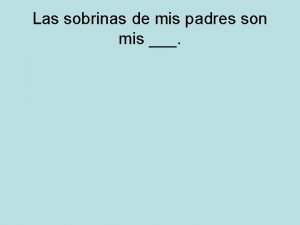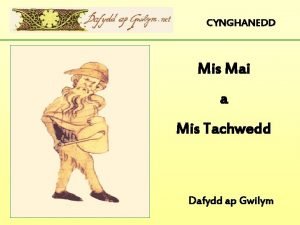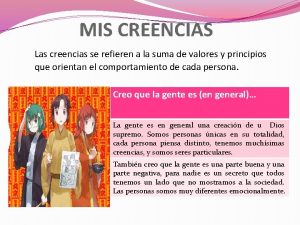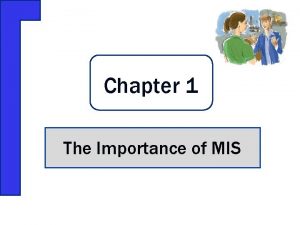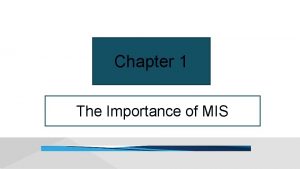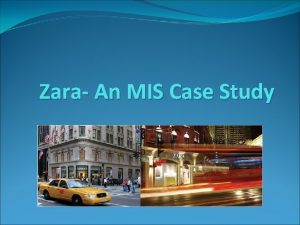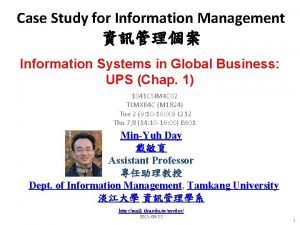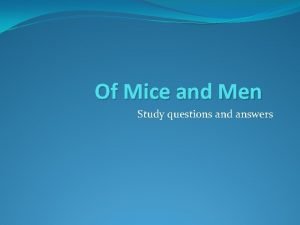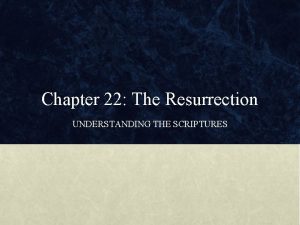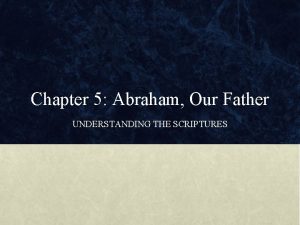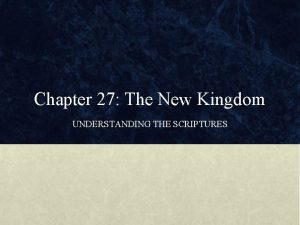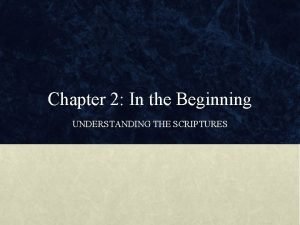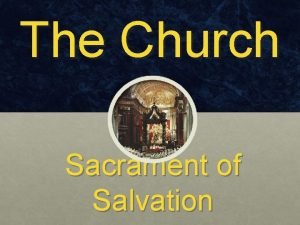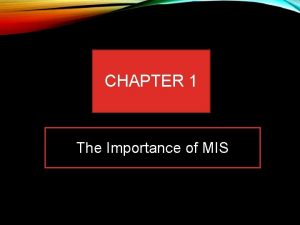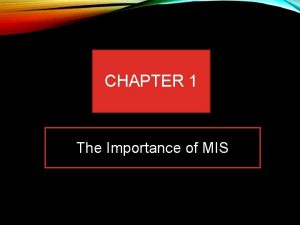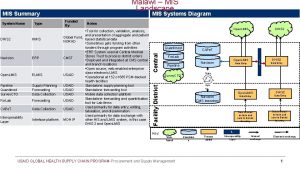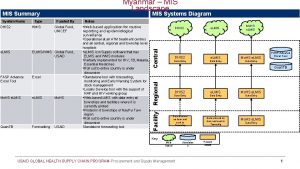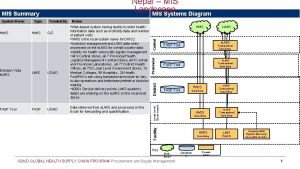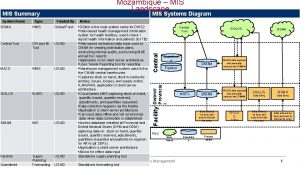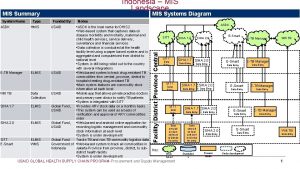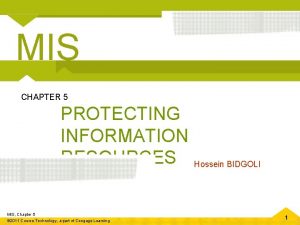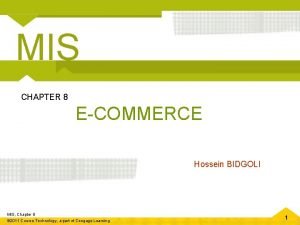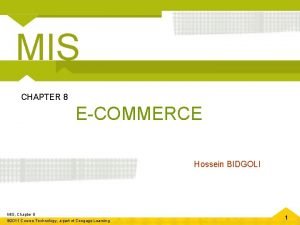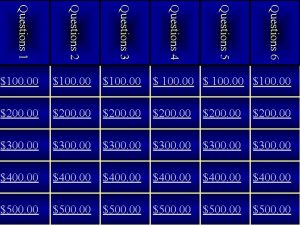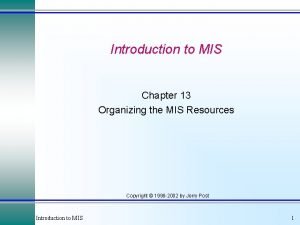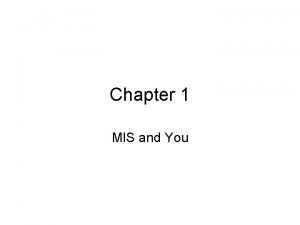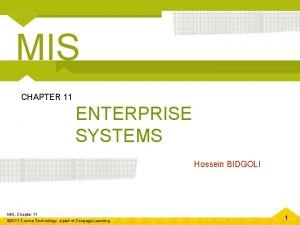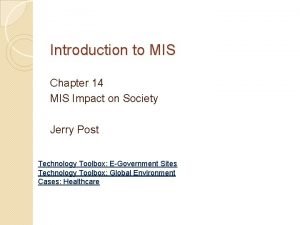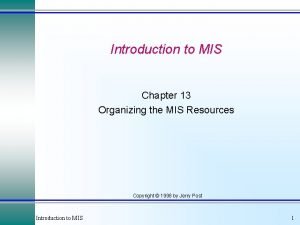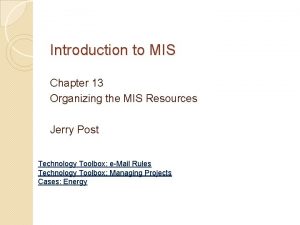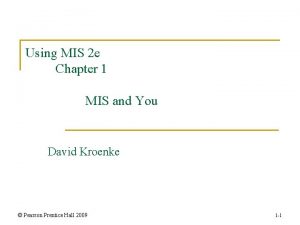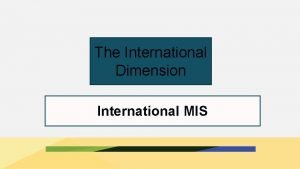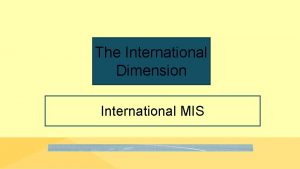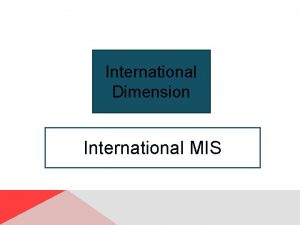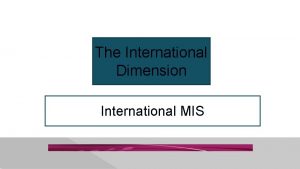CHAPTER 1 THE IMPORTANCE OF MIS Study Questions




































- Slides: 36

CHAPTER 1: THE IMPORTANCE OF MIS

Study Questions Q 1: Why is Introduction to MIS the most important class in the business school? Q 2: What is MIS? Q 3: How can you use the five-component model? Q 4: What is information Q 5: What makes some information better than other information? Q 6: Why is the difference between information technology and information systems important? Q 7: 2020? Copyright © 2010 Pearson Education, Inc. Publishing as Prentice Hall 1 -2

Q 1: Why is Introduction to MIS the most important class in the business school? We Begin with--What is Moore’s Law? Copyright © 2010 Pearson Education, Inc. Publishing as Prentice Hall 1 -3

Moore’s Law “The number of transistors per square inch on an integrated chip doubles every 18 months. ” The speed of a computer chip increases in proportion to the density of the transistors (i. e. , density doubles, speed doubles) Price/performance ratio of computers has fallen dramatically Computers are smaller Less expensive Copyright © 2010 Pearson Education, Inc. Publishing as Prentice Hall 1 -4

Moore’s Law (cont’d) Copyright © 2010 Pearson Education, Inc. Publishing as Prentice Hall 1 -5

What Does this Mean to You? Anyone want to field this question? 1 -6

Moore’s Law Effect Because of Moore’s Law, the cost of data communications and data storage is essentially zero. What does that mean? What are the implications of that? What are the opportunities? Copyright © 2010 Pearson Education, Inc. Publishing as Prentice Hall 7

Consider This…most didn’t exist before 2005 You. Tube i. Phone Facebook Second Life Hulu Twitter Linked. In Drop. Box Copyright © 2010 Pearson Education, Inc. Publishing as Prentice Hall 8

What implications does that hold for IS professionals in the near future? AND, WHY IS THAT?

First Reason why MIS is the Most Important Class Future business professionals need to be able to assess, evaluate, and apply emerging information technology to business. That statement should interest everyone in this room regardless of major or interest. Copyright © 2010 Pearson Education, Inc. Publishing as Prentice Hall 10

Notable Quote From Text “The only job security that exists is a marketable skill and the courage to use it. ” Copyright © 2010 Pearson Education, Inc. Publishing as Prentice Hall 11

Skills that Workers in the 21 st Century will Need “Rapid technological change and increased international competition place the spotlight on the skills and preparation of the workforce, particularly the ability to adapt to changing technological and shifting demand. Shifts in the nature of organizations…favor strong nonroutine cognitive skills. Copyright © 2010 Pearson Education, Inc. Publishing as Prentice Hall 12

What are the Requirements for Strong Non-Routine Cognitive Thinking? Abstract reasoning Systems thinking Collaboration Ability to experiment productively Copyright © 2010 Pearson Education, Inc. Publishing as Prentice Hall 13

Skill Examples Skill Example Abstraction Construct a model or representation Model system components show components’ inputs and outputs relate to one another Develop ideas and plans with others. Provide and receive critical feedback. Create and test promising new alternatives, consistent with available resources. Systems Thinking Collaboration Experimentation Copyright © 2010 Pearson Education, Inc. Publishing as Prentice Hall 14

This Course is the Most Important Course in the Business School It will give you the background you need to assess, evaluate, and apply emerging information systems technology to business It can give you the ultimate in job security— marketable skills—by helping you learn abstraction, systems thinking, collaboration, and experimentation. Copyright © 2010 Pearson Education, Inc. Publishing as Prentice Hall 15

Q 2: What is MIS? MIS = Management Information Systems MIS is the development and use of information systems that help businesses achieve goals and objectives Key elements of MIS: Development and use Information systems Business goals and objectives Next let’s look at what an information system is Copyright © 2010 Pearson Education, Inc. Publishing as Prentice Hall 1 -16

What is a System: a group of components that interact to achieve some purpose Keep this in the back of your mind as we move forward with our discussion here in chapter one Copyright © 2010 Pearson Education, Inc. Publishing as Prentice Hall 17

Five-Component Framework of an Information System Copyright © 2010 Pearson Education, Inc. Publishing as Prentice Hall 1 -18

Simple Example: Your First Class Assignment Are we using hardware? Are we using software? What about data, is that in there too? Procedures? What do you think? Lastly, people—well of course there…you! Copyright © 2010 Pearson Education, Inc. Publishing as Prentice Hall 19

Complex Example—Airline Reservation System Does it employ hardware? Software? Any of that used in this example? Data? No data in this example is there? Perhaps there is after all Any procedures with airlines and reservation? Of course there is! Finally people—no people needed here right? Operators, Programmers, Maintenance, etc. Copyright © 2010 Pearson Education, Inc. Publishing as Prentice Hall 20

Development and Use of Information Systems Business professionals need to: 1. Take an active role in IS to ensure that systems meet their needs 2. Understand how IT systems are constructed 3. Consider users’ needs during development 4. Learn how to employ IT systems 5. Take into account ancillary IT functions Security Backup Copyright © 2010 Pearson Education, Inc. Publishing as Prentice Hall 1 -21

Afraid of Change? Are people in general afraid of change? Whichever way you feel, why do you think that is? Copyright © 2010 Pearson Education, Inc. Publishing as Prentice Hall 22

Achieving Business Goals MIS aids in achieving businesses’ objectives Businesses don’t do anything It’s people within the business that perform work. Therefore, MIS empowers users to achieve business objectives Information systems exist to assist business people Information systems exist to achieve business goals and objectives Copyright © 2010 Pearson Education, Inc. Publishing as Prentice Hall 1 -23

Business People Must Ask IS Related Questions What will the system do for us? What is its purpose? What will using it enable us to do? What goals can we accomplish through its use? 5. How will it aid us in reaching our objectives? 6. Are the costs of maintaining the page sufficiently offset by the benefits? 1. 2. 3. 4. Copyright © 2010 Pearson Education, Inc. Publishing as Prentice Hall 1 -24

Example: Creating a Facebook Presence for a Company What is the purpose of our facebook page What is it going to do for us Is Facebook the best choice? She we be using Microsoft Vine, My. Space, etc. instead? Are there unforeseen complications or side effects with adopting this new project? Copyright © 2010 Pearson Education, Inc. Publishing as Prentice Hall 25

Q 3: How Can You Use the Five. Component Model? Computer Side Includes: 1. Hardware 2. Software Bridge Includes: 1. Data Human Side Includes: 1. Procedures Methods, standards, protocols, etc. 2. People You are the most important part of an information system! Copyright © 2010 Pearson Education, Inc. Publishing as Prentice Hall 1 -26

Supporting Example of the Importance of You! Suppose you have developed an information system that can predict the future The system tells you that Walt Disney is going to pass on on Dec. 15, 1966 Say you have 50, 000 dollars to invest—would you buy or short Disney stock and why? Walt Disney, like many other master artists, value rises after they pass on. Your ability to analyze and cognitive apply information models is crucial to the quality of the decision that is made with a “perfect” IS. Copyright © 2010 Pearson Education, Inc. Publishing as Prentice Hall 27

Low Tech vs High Tech Information Systems Consider… Customer support information system with an email file and program—High or Low tech and why? Now how about a customer support information system that collects all data and automatically generates emails when criteria is reached—High or Low tech and why? Refer back to figure 4 page 11 People resist change Copyright © 2010 Pearson Education, Inc. Publishing as Prentice Hall 1 -28

Some Class Examples American Express Low tech or high tech? Gestalt Face Information research Information storage and retrieval Low tech or high tech? Copyright © 2010 Pearson Education, Inc. Publishing as Prentice Hall 29

What is the Scope of a Proposed New System—Applying the Five Component Framework Your Corporation Proposed NEW IS Pitched to How big of an investment are we talking about here? What new hardware is needed? What programs will you need to license or build? What databases will be needed? What types of existing and new data will be needed? What new procedures will need to be created for use and administration of the proposed system? And finally, what impact will the new system have on our people Which jobs change? Who needs training? How will the new technology impact morale? Will you need new hires? Will your company need to reorganize? Weigh all this against the potential benefits of the system. Copyright © 2010 Pearson Education, Inc. Publishing as Prentice Hall 30

Agree or Disagree with this Statement? The components show on page 11 (figure 4) are in order of ease of change and the amount of organizational disruption—agree or disagree? Hardware—easy to change? Software—easy to change? Data—easy to change? Procedures—easy to change? People—easy to change? Copyright © 2010 Pearson Education, Inc. Publishing as Prentice Hall 31

Q 4: What is Information: Knowledge derived from data Data: Data is recorded facts or figures Mary Jones earns $25. 00; James Smith Earns $17. 50—Data or Information? Average of all aerobic instructors is $22. 37 is information because it is derived from the data of individual wages Jeff Parks earns $10. 00 per hour –Data The statement that Jeff Parks earns less than half the average hourly wage of the aerobics instructors—Information is data processed in some way to form a meaningful content through witch knowledge is gained. Copyright © 2010 Pearson Education, Inc. Publishing as Prentice Hall 1 -32

ARE THERE ETHICAL CONSIDERATIONS IN THE WAY THAT INFORMATION IS USED? Discuss Ethics Handout

Q 5: What Makes Some Information Better (More Valuable) Than Other Information? Is Accurate information more valuable than inaccurate information? Is Timely information more valuable? Is Relevant information more valuable? Is Just Barely Sufficient information more valuable? Worth Its Cost information more valuable Daily report of the occupants of a full graveyard? Candy stick storage costs at Cracker Barrel exp. Copyright © 2010 Pearson Education, Inc. Publishing as Prentice Hall 34

Q 6: What is the Difference Between Information Technology and Information Systems? Information Technology is the hardware, software, data, and even possibly purchased procedures Building Blocks that are used for your organization’s people to create a valuable organizational information system with. Copyright © 2010 Pearson Education, Inc. Publishing as Prentice Hall 1 -35

Q 7: 2020? What will computers look like? IPad example use Everything can “potentially” be a computer Connected pacemaker in an individual Other examples you can think of? What about its impact on education? What do you think going forward? What other areas/technological landscapes will look different? Copyright © 2010 Pearson Education, Inc. Publishing as Prentice Hall 1 -36
 Gerenciando mi proyecto de vida
Gerenciando mi proyecto de vida El hijo de mi tío es mi ___.
El hijo de mi tío es mi ___. Mis mai a mis tachwedd
Mis mai a mis tachwedd Mis mai a mis tachwedd
Mis mai a mis tachwedd Cuales son mis creencias
Cuales son mis creencias Importance of mis
Importance of mis Importance of mis
Importance of mis Information system of zara
Information system of zara Case study on mis
Case study on mis Of mice and men questions and answers
Of mice and men questions and answers Genesis chapter 12 questions and answers
Genesis chapter 12 questions and answers Our moral life in christ chapter 9 study questions
Our moral life in christ chapter 9 study questions Understanding the scriptures chapter 24 study questions
Understanding the scriptures chapter 24 study questions Blessed lord's day
Blessed lord's day Our moral life in christ chapter 3 study questions
Our moral life in christ chapter 3 study questions Understanding the scriptures chapter 22 study questions
Understanding the scriptures chapter 22 study questions Understanding the scriptures chapter 20 study questions
Understanding the scriptures chapter 20 study questions Our moral life in christ chapter 1 questions and answers
Our moral life in christ chapter 1 questions and answers The blessed trinity chapter 5 study questions
The blessed trinity chapter 5 study questions Chapter 6 holy orders study questions
Chapter 6 holy orders study questions Understanding the scriptures chapter 6 study questions
Understanding the scriptures chapter 6 study questions Understanding the scriptures chapter 5 study questions
Understanding the scriptures chapter 5 study questions Understanding the scriptures chapter 4 study questions
Understanding the scriptures chapter 4 study questions Understanding the scriptures chapter 2 study questions
Understanding the scriptures chapter 2 study questions The church sacrament of salvation chapter 3 study questions
The church sacrament of salvation chapter 3 study questions Hát kết hợp bộ gõ cơ thể
Hát kết hợp bộ gõ cơ thể Bổ thể
Bổ thể Tỉ lệ cơ thể trẻ em
Tỉ lệ cơ thể trẻ em Voi kéo gỗ như thế nào
Voi kéo gỗ như thế nào Tư thế worm breton là gì
Tư thế worm breton là gì Chúa yêu trần thế
Chúa yêu trần thế Môn thể thao bắt đầu bằng chữ đua
Môn thể thao bắt đầu bằng chữ đua Thế nào là hệ số cao nhất
Thế nào là hệ số cao nhất Các châu lục và đại dương trên thế giới
Các châu lục và đại dương trên thế giới Công thức tính thế năng
Công thức tính thế năng Trời xanh đây là của chúng ta thể thơ
Trời xanh đây là của chúng ta thể thơ

